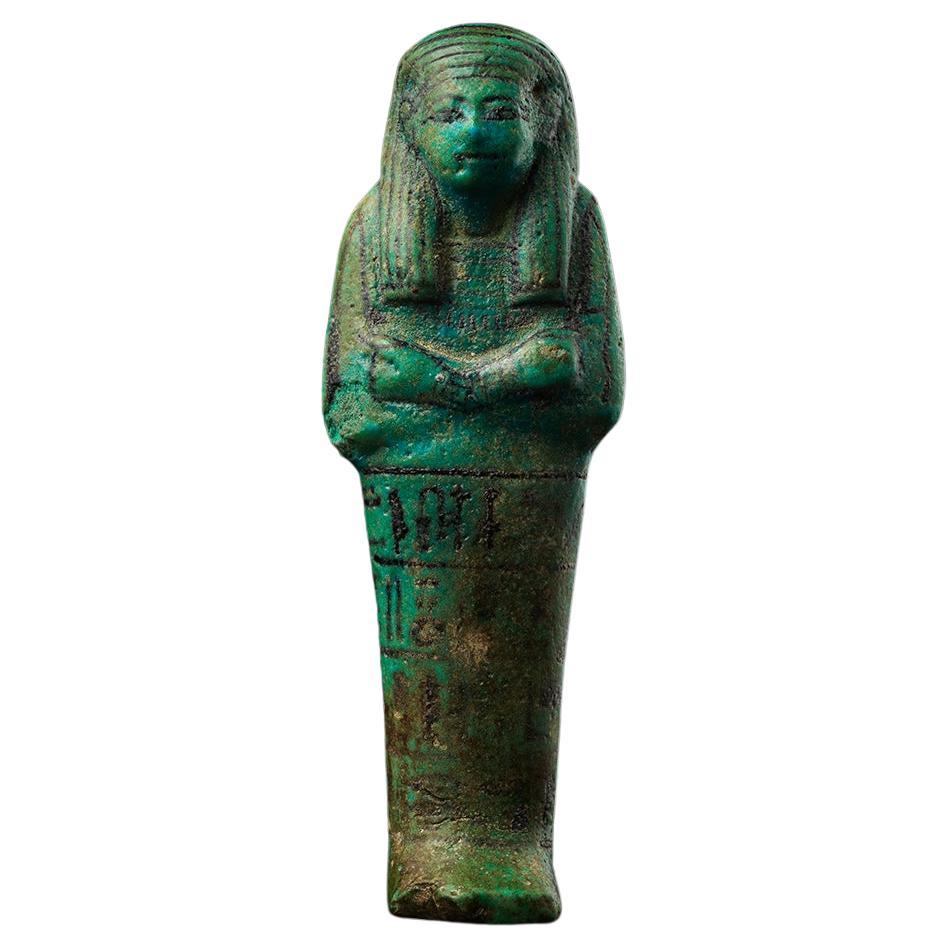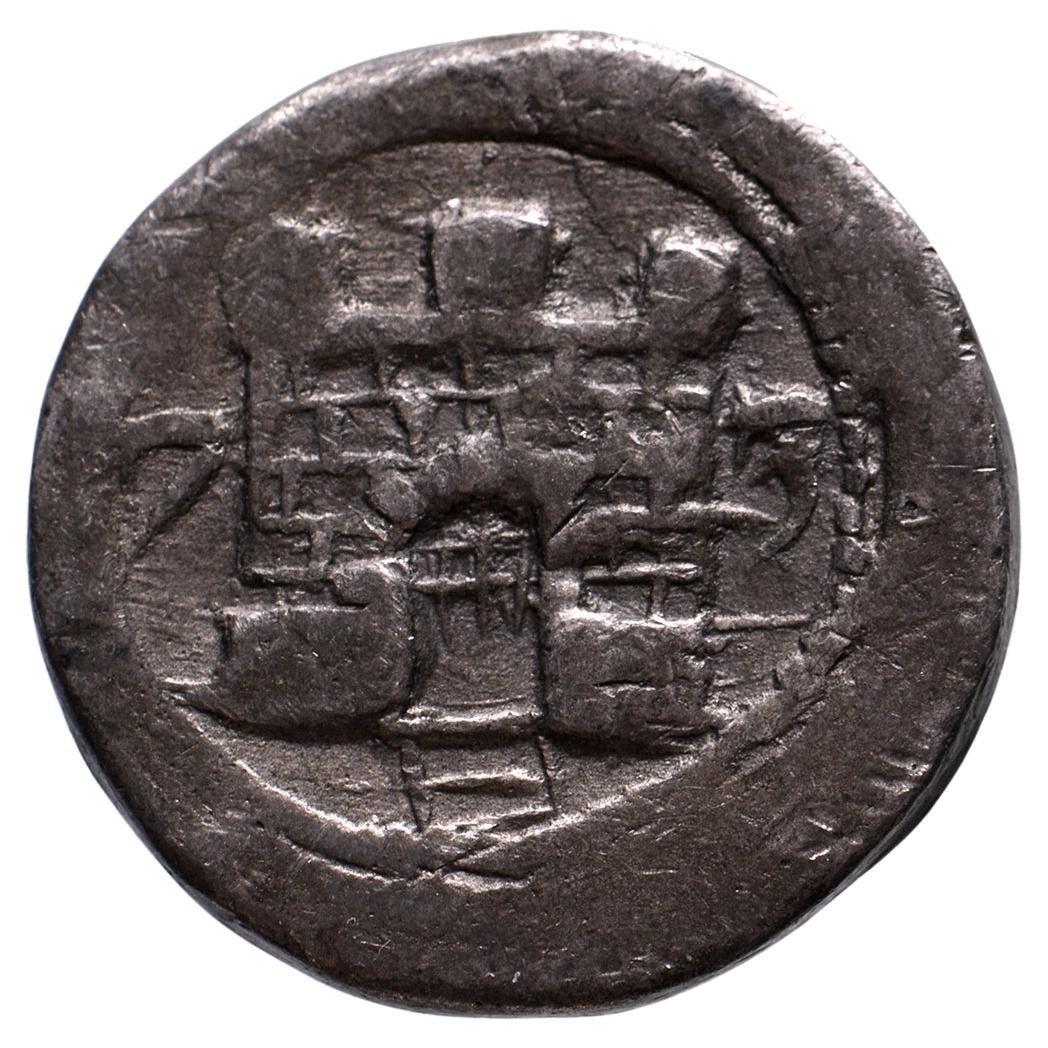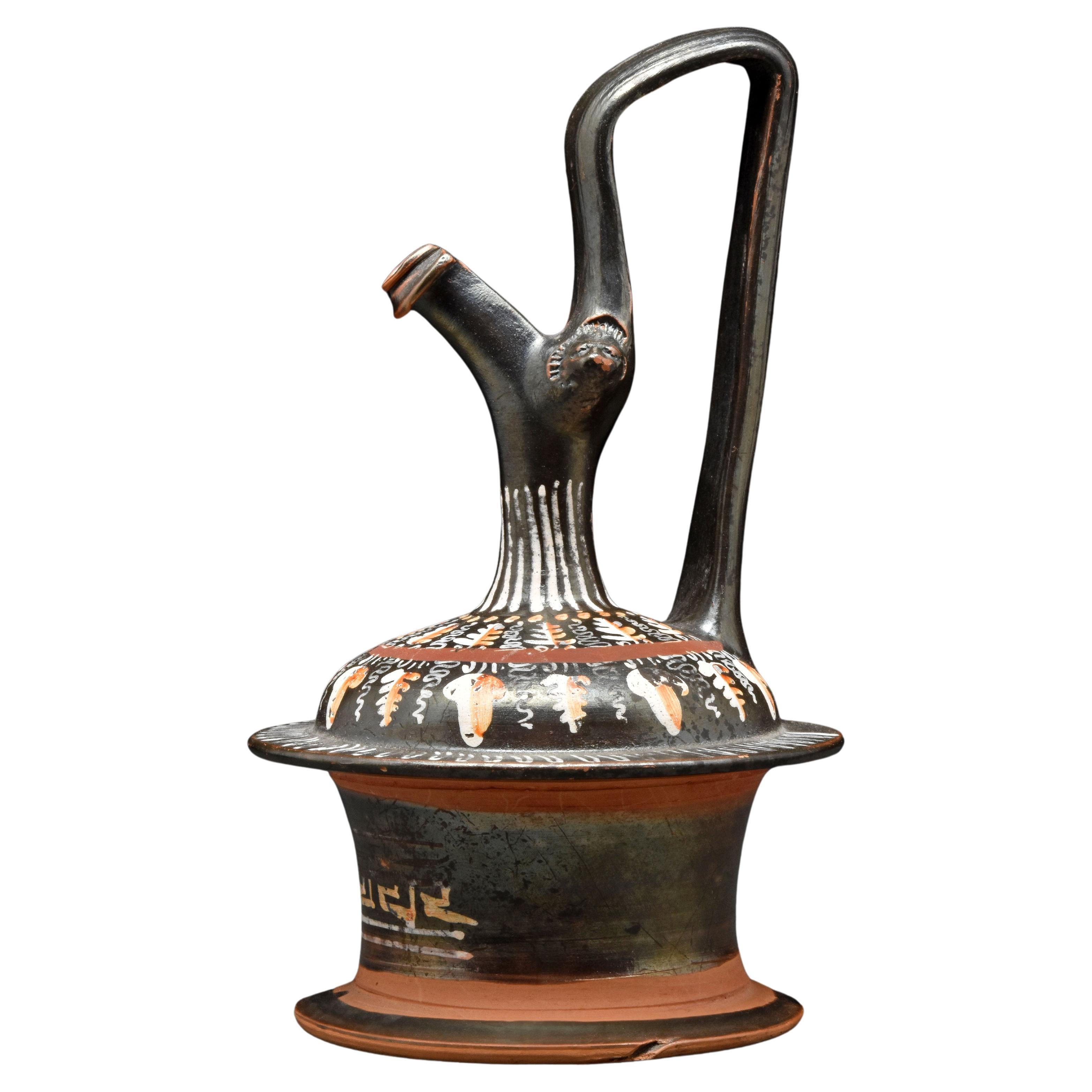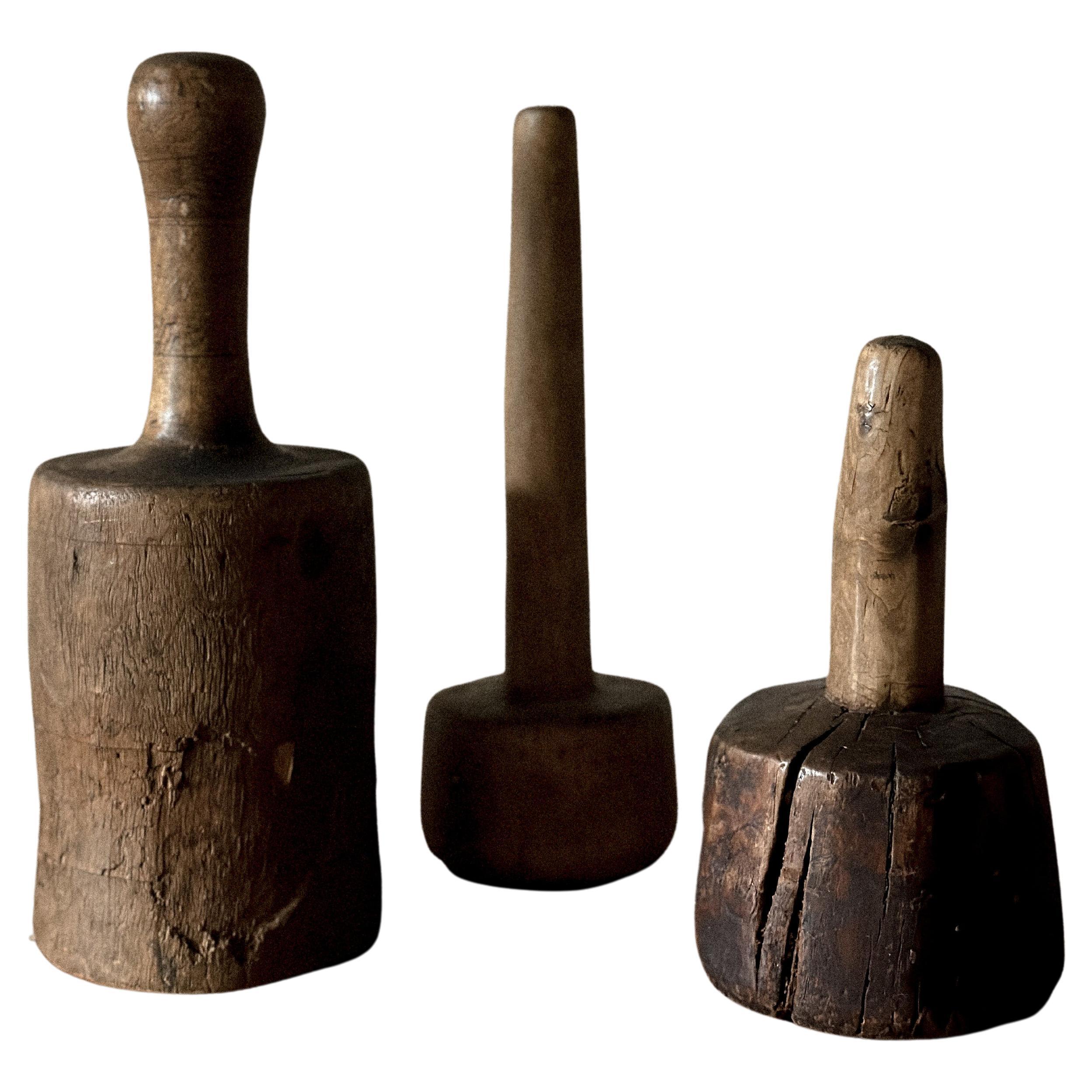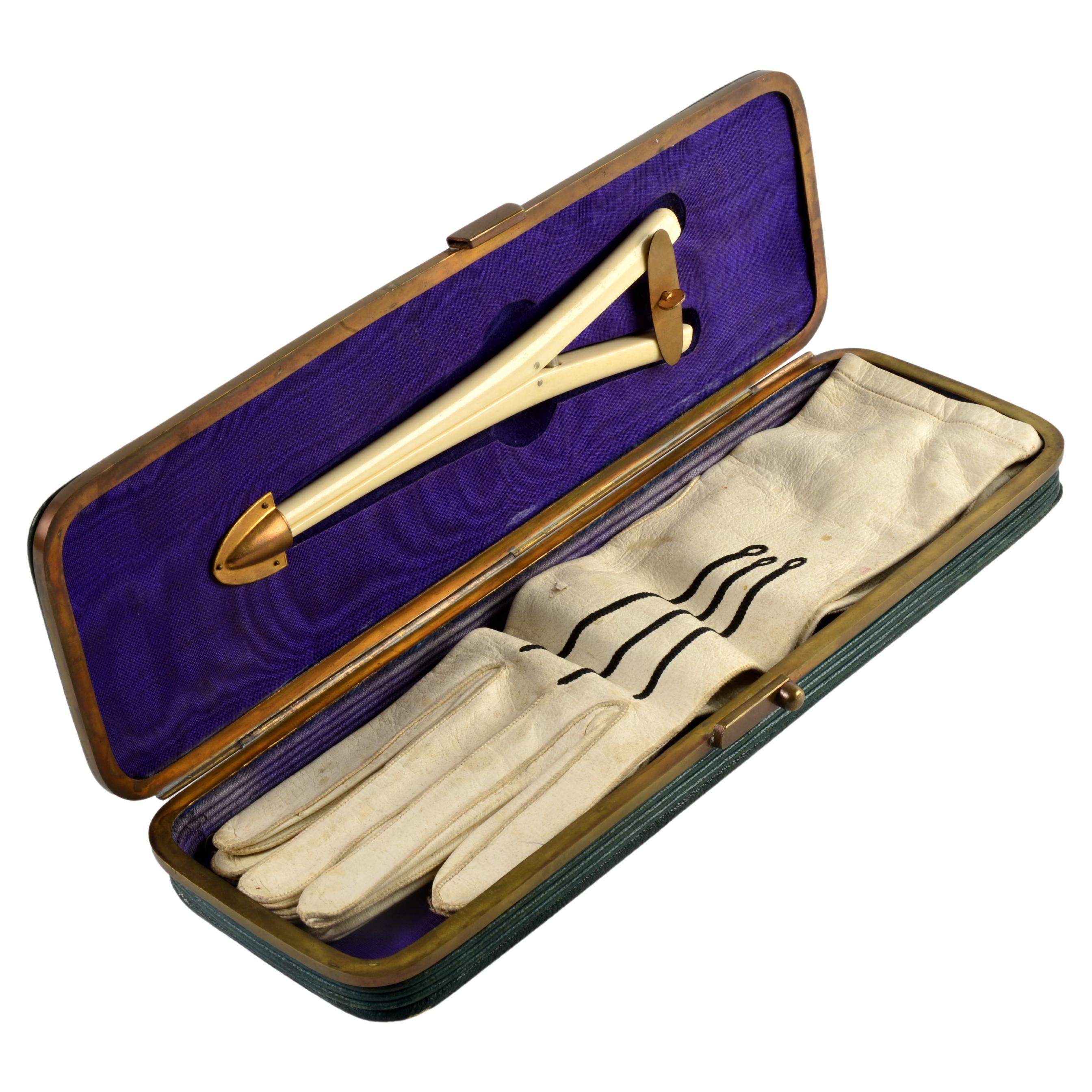Want more images or videos?
Request additional images or videos from the seller
1 of 7
Megalithic Stela
About the Item
A tall anthropomorphic stele of carved granite, divided into two distinct regions of the body and face. The body is a single unarticulated block, but the facial features are outlined with strong carved lines. A T-shape marks the position of the nose and eyebrows, with two small horizontal lines for the eyes and a third, slightly deeper, line for the mouth.
Stele of this kind are represented in many major traditions in prehistoric Europe. These include: southern Ukraine and Moldova, regions of the Italian and Swiss Alps, Lunigiana in the Apuan Alps, Southern France, Sardinia, Corsica, Iberia, Southern Italy, Malta, the Paris Basin, Channel Islands, Germany, Hungary, and Bulgaria. Due to the scarcity of the archaeological record, it is impossible to estimate the total numbers of stelae in each group, but the largest known groups are those from Lunigiana and Ukraine, which each have over 100 known examples.[1] Although each traditional has its own characteristics, there are still many commonalities across geographically distinct localities. The question of how such widely dispersed but clearly related traditions can have come about and continued for over a thousand years (between about 3500 and 2000 B.C.) is still something of a mystery.
Most stele are removed from their archaeological context before they are found – it is not uncommon to find them reused in modern architectural structures. Those that are found in context are generally in monumental, often funerary sites. Some are used as grave or mound markers, and others have been found within tombs and burial chambers, or in groups at ritual sites. They have therefore been interpreted as representing gods or ancestral figures. Due to their scale and materials, it would have been a large undertaking to produce one of these stele, which was probably carried out by groups within the community rather than single individuals.
[1] John Robb, ‘People of Stone: Stela, Personhood, and Society in Prehistoric Europe’, Journal of Archaeological Method and Theory, 16:3 (September 2009), pp. 169-170.
Provenance:
Previously on the European art market, from at least 1970.
Previously in the Private Collection of Dr. Wolfgang Meyn, Soest, Germany, acquired from the above in 1972.
Private Collection of Mr. Rob Fens, The Netherlands, acquired from the above.
Spanish Art Market, 2023
ALR: S00235754, with IADAA Certificate, this item has been checked against the Interpol database.
- Dimensions:Height: 26.38 in (67 cm)Width: 11.82 in (30 cm)Depth: 5.91 in (15 cm)
- Materials and Techniques:
- Place of Origin:
- Period:
- Date of Manufacture:3rd Millennium B.C.
- Condition:Wear consistent with age and use.
- Seller Location:London, GB
- Reference Number:
About the Seller
5.0
Vetted Seller
These experienced sellers undergo a comprehensive evaluation by our team of in-house experts.
Established in 1910
1stDibs seller since 2020
- ShippingRetrieving quote...Ships From: London, United Kingdom
- Return PolicyThis item cannot be returned.
More From This SellerView All
- Ushabti for ImenmesLocated in London, GBA mummiform ushabti in blue faience. Four registers of hieroglyphic characters are painted around the lower half of the ushabti, with a vertical column of hieroglyphs in the centre o...Category
Antique 15th Century and Earlier Egyptian Egyptian Antiquities
MaterialsFaience
- Statuette of the Goddess NeithLocated in London, GBBronze statue of the goddess Neith, striding, her left foot extended forward. Her left hand is extended forward and formally held a papyrus sceptre, a fragmentary ankh is visible in ...Category
Antique 15th Century and Earlier Egyptian Egyptian Antiquities
MaterialsBronze
- Anglo-Saxon Hanging BowlLocated in London, GBA very rare and near-complete copper-alloy hanging bowl and associated fittings. Crafted from a single sheet of bronze, the body of the bowl is curved, with a slightly recessed lip. ...Category
Antique 15th Century and Earlier English Antiquities
MaterialsBronze
- Bronze HoardLocated in London, GBDagger L: 27.8 cm, Luniform bronze, possibly a belt buckle L: 10.8 cm, Shield-shaped bronze with a point Diam: 6.5 cm, Pommel Diam: 3.7 cm, Violin-bow brooch L: 17.5 cm, P-Shape...Category
Antique 15th Century and Earlier European Classical Roman Antiquities
MaterialsBronze
- Two Glass Inlay PairsLocated in London, GBTwo pairs of two halves from the same bar, finely detailed, with pointed ears and eyebrows, opaque yellow face, opaque red on the mouth, nose, eyes and ears, translucent cobalt blue edges to the mouth, nose and ears, with translucent emerald green leaves above and between the translucent cobalt blue brows and eye line, translucent pink pupils, with translucent cobalt blie and opaque white snake scales below the face, in translucent cobalt blue matrix, cut in the lower part of a cartouche design. These rare heads might represent the Agathos Daimon, the tutelary deity of Alexandria, who was also identified with Serapis, the male counterpart of Isis-Thermouthis (who in turn was a graecisized form of the early snake harvest goddess Renenutet). In a statue of Isis-Thermouthis in Alexandria museum (no. 25773, ex-collection King Farouk I), reproduced in Gotten, Pharaonen, no. 151, the snake goddess...Category
Antique 15th Century and Earlier Egyptian Antiquities
MaterialsGlass
- Bronze SirenLocated in London, GBSirens were dangerous bird-like females who tempted sailors with their hauntingly beautiful song. In Homer’s Odyssey (XII, 39) Odysseus and his sailors were warned about the lethal c...Category
Antique 15th Century and Earlier Greek Classical Greek Antiquities
MaterialsBronze
You May Also Like
- 1/4 daalder siege coin in tin AlkmaarLocated in UTRECHT, UTObverse: castle between 7 – 3 Reverse: blank VERY RARE Weight: 9.86 g Diameter: 25.0 mm Grade: Very Fine Reference: vG. 49; CNM 2.01.5 After the fall of Haarlem, Don Frederik turn...Category
Antique 16th Century Dutch Other Antiquities
MaterialsTin
- Greek Gnathian EpyichysisLocated in London, GBA delicate South-Italian epichysis. The vessel was a wine jug, composed of a narrow neck, a small lip and a high-arching handle. This Gnathian-ware epichysis was decorated with tongu...Category
Antique 15th Century and Earlier Italian Classical Greek Antiquities
MaterialsTerracotta
- Greek Black Glaze Pottery GuttusLocated in London, GBA black-glazed terracotta guttus (oil-lamp filler) with a spool-shaped foot, a wheel-shaped body, a protruding ring handle, and a cylindrical spout with an everted rim. The tondo fea...Category
Antique 15th Century and Earlier Italian Classical Greek Antiquities
MaterialsPottery
- A Trio of Antique Wooden Pestles from the 19th CenturyLocated in Hønefoss, 30A Trio of Antique Wooden Pestles from 19th Century Scandinavia Discover the essence of simplicity and beauty through our exquisite set of three ...Category
Early 20th Century Norwegian Antiquities
MaterialsStone
- 19th century french gusseted glove box or caseLocated in SAINT-YRIEIX-SUR-CHARENTE, FRLate 19th century French glove box or case, probably made by Louis Ducat, successor to the Smal firm. This firm was located on the Place du Palais Roy...Category
Antique 1870s French Napoleon III Antiquities
MaterialsBrass
- Antique Wine Bottle Carrier, France, Early 20th CenturyLocated in Chappaqua, NYAntique Wine Bottle Carrier, France, early 20th century. A zinc carrier to hold 6 wine bottles.Category
Early 20th Century French Folk Art Antiquities
MaterialsZinc
